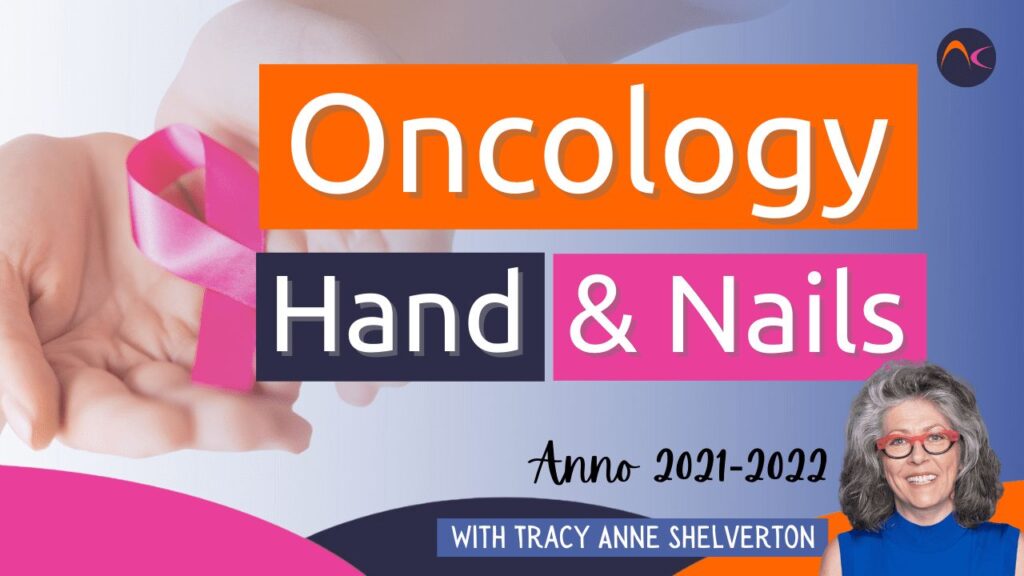Trong thế giới làm móng, đây là một công việc khó khăn và không phải không có biến chứng.
We all know someone who has had, is having or will be having chemo therapy and if your family is like mine, it’s the #1 cause of death – although 3 of us have survived our cancer, my mother, my son and myself, our grandparents didn’t, our father didn’t. My older sister has yet to be diagnosed with cancer so she is (obviously) special!
I am now a specialised Oncology Hand Care® stylist and teacher – Registered with the IKNL in the Netherlands.
Kiến thức đi kèm gánh nặng.
To maintain and improve that knowledge every day and to be better and do more for all our patients and clients in the Oncology Hand Care®.
When we don’t know stuff – we don’t make mistakes and we fear nothing – life is somehow easier then.
Oncology Hand Care® training takes about 120hrs and is given by experts in the field, oncology nurses, neurologists, dermatologists and oncology specialists – You cannot learn it all in a day, and I can’t tell you all about it in so many words, what I can do is this …
Vì “Oncology hand care® the integrity of the nail unit is paramount, with an eye on maintaining that integrity through therapy or improving it through therapy – We aim to start this maintenance before the therapy begins.”
Already it sounds complicated – so I’m going to strip it right back to the super basics and some of it will sound just plain weird, but, I will try to explain why it’s a do or a don’t. Maybe then you can make a better choice for you, your family or your salon clients – lets face it going through cancer is not a fun thing, and depending on the therapy it can make or break you. The most important thing as far as I am concerned is ‘Quality of life’ not just sau đó hóa trị hoặc liệu pháp miễn dịch nhưng cũng trong suốt thời gian đó.
Tôi sẽ cố gắng trình bày đơn giản và các quy tắc áp dụng cho cả chân và tay.
Do’s and Don’ts Part 1
LÀM:
- Always wear a face mask FFP2 or better. This is not to protect you from your client but to protect your client from you. Picking up a bug from you just before therapy can delay treatment and therefore be life threatening for him or her – it’s a real danger.
- Standard salon hygiene is essential. Think of all the things we did for our salon safety during Covid-19, all those hygiene steps should still be in place except the screen – if you are wearing a FFP2 mask or better this will be sufficient.
- Remove all artificial nail products or gel polish (asap) before start of therapy. We don’t do this to annoy people or make them uncomfortable, we do this so there are no hidden microbes between product and natural nail plate or natural nail plate and nail bed or in the nail plate itself – infections of any kind, bacterial, fungal or viral can have enormous consequences for clients/patients undergoing any chemo, radio or immune therapy. (The oncology department will refer the patient to a podiatrist for foot (health) care if there are signs of fungal infection before therapy starts)
- Start ASAP with regular use of nail and skin oil and lotion & nail plate care, this is the same for men as women. This because we know that the healthier the nail unit before start of therapy the less chance there is of infection from opportunistic pathogens spreading to other parts of the body. (Chemotherapy & Immune therapy compromise our body’s ability to fight off infections and infections delay therapy for your patient or client)
- Use a 240-grit file to file the free edge or a glass file. This reduces greatly the chances of causing a wound or puncturing the skin.
- If you do need to use an artificial nail product during therapy, always use clear product and create colour or art with nail varnish, when using nail varnish don’t forget to also use a base coat.
- Avoid hard gel – if it cannot be soaked off use a peel off base coat. If the product needs to be removed quickly it can be done simply and without causing extra nail plate damage. (This would only be done if there were signs of infection in, on or under the nail plate, or toxic build up of chemo in the nail bed, for this very same reason its important to use clear artificial nail products – nail varnish can be removed and replaced quickly and without hassle in the hospital or clinic should someone need to look for an infection or nail toxicity)
DON’T’S: (trong quá trình điều trị)
- No nipping, cutting or mechanical abrasion of the skin (RM) with electric file. Causing a skin wound of any kind is irresponsible and will put your client/patient and or family member at extreme risk of infection. (Skin cannot recover at the same speed during chemo and immune therapy and will not only become thinner over time but the keratinisation process will be speeded up as the body attempts to protect itself from further compromise)
- Avoid paraffin hand treatments as these will be too hot – (Neuropathy is a serious complication your client/patient could be suffering from and you can cause them more pain or worse if you don’t know what neuropathy is or how to spot it you should not have had your client/patient at your nail table)
- Never buff the natural nail plate – not even with a sponge file – your client/patient needs intact nail units and intact guardian seals. (You need to understand that our hands and fingers are essential to our daily lives, infections need to be avoided at all costs. If you cannot wipe your backside or change your clothes yourself if you vomited, your standard of life during chemotherapy will be considerably impacted, buffing the natural nail reduces the protective upper layer allowing opportunistic pathogens a way in)
- Please do not ‘push’ the proximal nail fold with a cuticle pusher it just causes more damage. The proximal nail fold will keratinise itself as a defence reaction to doing this, this will cause more pain and discomfort than before that happened. Use a good quality nail oil and a curette if you want to passively remove the cuticle from the nail plate.
- Tránh sử dụng các dụng cụ mà không rửa sạch và khử trùng trước.
Contraindications: Do not treat the hands or fingers nếu bạn hoặc khách hàng, bệnh nhân hoặc thành viên gia đình của bạn có;
- sốt cao hơn 38 độ C
- nhiễm trùng da
- chảy máu hoặc có dấu hiệu nhiễm trùng ở ngón tay của anh ấy/cô ấy
- màu sắc lạ ở nền móng tay
NÊN tham khảo lại nhóm ung thư nếu bạn nhận thấy bất kỳ dấu hiệu nào được liệt kê ở trên và/hoặc nếu điều này nghe có vẻ khó hiểu hoặc bạn không chắc chắn thì vui lòng KHÔNG ĐIỀU TRỊ your client, patient and or family member – it’s an act of kindness and professionalism not to!
**this information DOES NOT REPRESENT AN ONCOLOGY QUALIFICATION for nail professionals. It is just a guide.


